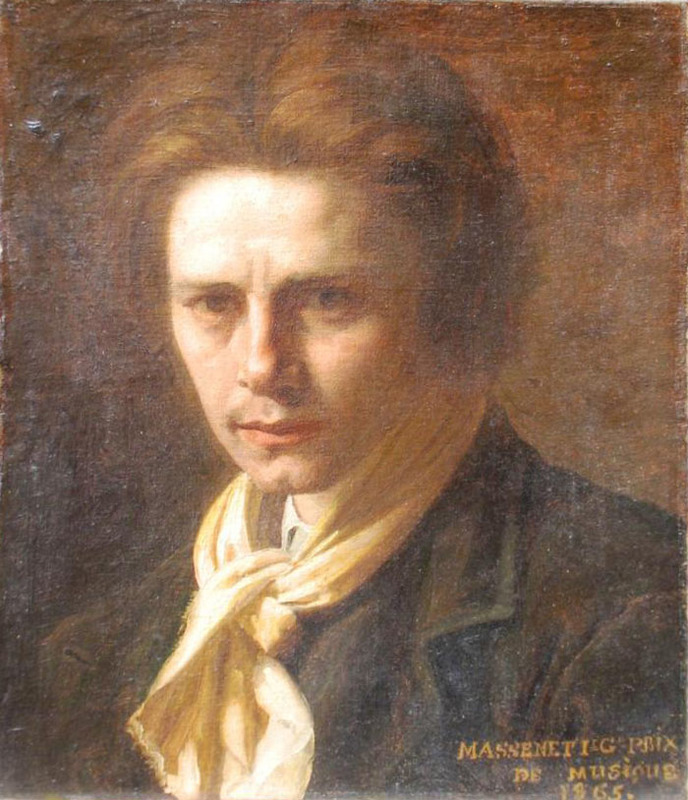|
Oh Superman
"O Superman", also known as "O Superman (For Massenet)", is a 1981 song by performance artist and musician Laurie Anderson. The song became a surprise hit in the United Kingdom after it was championed by DJ John Peel, rising to #2 on the UK Singles Charts in 1981. Prior to the success of this song, Anderson was little known outside the art world. First released as a single, the song also appeared on her debut album '' Big Science'' (1982) and as part of her live album ''United States Live'' (1984). The song topped the 1981 ''The Village Voice'' Pazz & Jop singles poll. Structure In writing the song, Anderson drew from the aria "Ô Souverain, ô juge, ô père" (O Sovereign, O Judge, O Father) from Jules Massenet's 1885 opera ''Le Cid''. She got the idea after seeing the aria performed in concert by American tenor Charles Holland. The first lines ("O Superman / O Judge / O Mom and Dad") especially echo the original aria ("Ô Souverain / ô juge / ô père"). Susan McClary suggest ... [...More Info...] [...Related Items...] OR: [Wikipedia] [Google] [Baidu] |
Laurie Anderson
Laurel Philips Anderson (born June 5, 1947), known as Laurie Anderson, is an American avant-garde artist, composer, musician, and film director whose work spans performance art, pop music, and multimedia projects. Initially trained in violin and sculpting,Amirkhanian, Charles"Women in Electronic Music – 1977" Liner note essay. New World Records. Anderson pursued a variety of performance art projects in New York City, New York during the 1970s, focusing particularly on language, technology, and visual imagery. She became more widely known outside the art world when her single "O Superman" reached number two on the UK singles chart in 1981. Her debut album ''Big Science (Laurie Anderson album), Big Science'' was released the following year. She also starred in and directed the 1986 concert film ''Home of the Brave (1986 film), Home of the Brave''. Anderson is a pioneer in electronic music and has invented several devices that she has used in her recordings and performance art sh ... [...More Info...] [...Related Items...] OR: [Wikipedia] [Google] [Baidu] |
UK Singles Chart
The UK Singles Chart (currently titled Official Singles Chart, with the upper section more commonly known as the Official UK Top 40) is compiled by the Official Charts Company (OCC), on behalf of the British record industry, listing the top-selling Single (music), singles in the United Kingdom, based upon physical sales, paid-for downloads and music streaming, streaming. The Official Chart, broadcast on BBC Radio 1 and MTV (Official UK Top 40), is the UK music industry's recognised official measure of singles and albums popularity because it is the most comprehensive research panel of its kind, today surveying over 15,000 retailers and digital services daily, capturing 99.9% of all singles consumed in Britain across the week, and over 98% of albums. To be eligible for the chart, a Single (music), single is currently defined by the Official Charts Company (OCC) as either a 'single bundle' having no more than four tracks and not lasting longer than 25 minutes or one digital audio ... [...More Info...] [...Related Items...] OR: [Wikipedia] [Google] [Baidu] |
Harmonizer
Pitch shifting is a sound recording technique in which the original pitch of a sound is raised or lowered. Effects units that raise or lower pitch by a pre-designated musical interval ( transposition) are called pitch shifters. Pitch and time shifting The simplest methods are used to increase pitch and reduce durations or, conversely, reduce pitch and increase duration. This can be done by replaying a sound waveform at a different speed than it was recorded. It could be accomplished on an early reel-to-reel tape recorder by changing the diameter of the capstan or using a different motor. As for vinyl records, placing a finger on the turntable to give friction will retard it, while giving it a "spin" can advance it. As technologies improved, motor speed and pitch control could be achieved electronically by servo drive system circuits. Pitch shifter and harmonizer A pitch shifter is a sound effects unit that raises or lowers the pitch of an audio signal by a preset interv ... [...More Info...] [...Related Items...] OR: [Wikipedia] [Google] [Baidu] |
Eventide, Inc
Eventide, Inc. (also known earlier as Eventide Clock Works Inc.) is an American audio, broadcast and communications company whose audio division manufactures digital audio processors, digital signal processor (DSP) software, and guitar effects. Eventide was one of the first companies to manufacture digital audio processors, and its products are mainstays in sound recording and reproduction, post production, and broadcast studios. Beginnings Eventide was founded by recording engineer Stephen Katz, inventor Richard Factor, and businessman/patent attorney Orville Greene. The business was founded in the basement of the Sound Exchange, a recording studio located at 265 West 54th Street in New York City and owned by Greene. When Katz needed to rewind the analog tape back to a specific point on their Ampex MM1000 multitrack recorder, but limited space in the studio did not allow for a tape op (a person who would operate the tape recorder on behalf of the sound engineer), Katz asked Fact ... [...More Info...] [...Related Items...] OR: [Wikipedia] [Google] [Baidu] |
Chord (music)
A chord, in music, is any harmonic set of pitches/frequencies consisting of multiple notes (also called "pitches") that are heard as if sounding simultaneously. For many practical and theoretical purposes, arpeggios and broken chords (in which the notes of the chord are sounded one after the other, rather than simultaneously), or sequences of chord tones, may also be considered as chords in the right musical context. In tonal Western classical music (music with a tonic key or "home key"), the most frequently encountered chords are triads, so called because they consist of three distinct notes: the root note, and intervals of a third and a fifth above the root note. Chords with more than three notes include added tone chords, extended chords and tone clusters, which are used in contemporary classical music, jazz and almost any other genre. A series of chords is called a chord progression. One example of a widely used chord progression in Western traditional music and blu ... [...More Info...] [...Related Items...] OR: [Wikipedia] [Google] [Baidu] |
Mary, Mother Of Jesus
Mary; arc, ܡܪܝܡ, translit=Mariam; ar, مريم, translit=Maryam; grc, Μαρία, translit=María; la, Maria; cop, Ⲙⲁⲣⲓⲁ, translit=Maria was a first-century Jews, Jewish woman of Nazareth, the wife of Saint Joseph, Joseph and the mother of Jesus. She is a central figure of Christianity, venerated under titles of Mary, various titles such as virgin or queen, many of them mentioned in the Litany of Loreto. The Eastern Orthodox Church, Eastern and Oriental Orthodox, Church of the East, Catholic, Anglican, and Lutheran churches believe that Mary, as mother of Jesus, is the Theotokos, Mother of God. Other Protestant views on Mary vary, with some holding her to have considerably lesser status. The New Testament of the Holy Bible, Bible provides the earliest documented references to Mary by name, mainly in the canonical Gospels. She is described as a young virgin who was chosen by God in Christianity, God to annunciation, conceive Jesus through the Holy Spirit ... [...More Info...] [...Related Items...] OR: [Wikipedia] [Google] [Baidu] |
Susan McClary
Susan Kaye McClary (born October 2, 1946) is an American musicologist associated with " new musicology". Noted for her work combining musicology with feminist music criticism, McClary is professor of musicology at Case Western Reserve University. Early life and education McClary was born in St. Louis, Missouri, and received her BA in 1968 from Southern Illinois University. She attended graduate school at Harvard University where she received her MA in 1971 and her PhD in 1976. Her doctoral dissertation was on the transition from modal to tonal organization in Monteverdi's works. The first half of her dissertation was later reworked and expanded in her 2004 book, ''Modal Subjectivities: Self-fashioning in the Italian Madrigal''. She taught at the University of Minnesota (1977–1991), McGill University (1991–1994), University of California, Berkeley (1993), and University of California, Los Angeles (1994–2011), before becoming a Professor of Musicology at Case Western Reserv ... [...More Info...] [...Related Items...] OR: [Wikipedia] [Google] [Baidu] |
Le Cid (opera)
''Le Cid'' is an opera in four acts and ten tableaux by Jules Massenet to a French libretto by Louis Gallet, Édouard Blau and Adolphe d'Ennery. It is based on the play of the same name by Pierre Corneille. It was first performed by a star-studded cast at the Paris Opéra on 30 November 1885 in the presence of President Grévy, with Jean de Reszke as Rodrigue. The staging was directed by Pedro Gailhard, with costumes designed by Comte Lepic, and sets by Eugène Carpezat (act 1), Enrico Robecchi and his student Amable (act 2), Auguste Alfred Rubé, Philippe Chaperon and their students Marcel Jambon (act 3), and Jean-Baptiste Lavastre (act 4). The opera had been seen 150 times by 1919 but faded from the repertory and was not performed again in Paris until the 2015 revival at the Palais Garnier. While ''Le Cid'' is not in the standard operatic repertory, the ballet suite is a popular concert and recording piece which includes dances from different regions of Spain. It was speciall ... [...More Info...] [...Related Items...] OR: [Wikipedia] [Google] [Baidu] |
Jules Massenet
Jules Émile Frédéric Massenet (; 12 May 1842 – 13 August 1912) was a French composer of the Romantic era best known for his operas, of which he wrote more than thirty. The two most frequently staged are '' Manon'' (1884) and ''Werther'' (1892). He also composed oratorios, ballets, orchestral works, incidental music, piano pieces, songs and other music. While still a schoolboy, Massenet was admitted to France's principal music college, the Paris Conservatoire. There he studied under Ambroise Thomas, whom he greatly admired. After winning the country's top musical prize, the Prix de Rome, in 1863, he composed prolifically in many genres, but quickly became best known for his operas. Between 1867 and his death forty-five years later he wrote more than forty stage works in a wide variety of styles, from opéra-comique to grand-scale depictions of classical myths, romantic comedies, lyric dramas, as well as oratorios, cantatas and ballets. Massenet had a good sense of the ... [...More Info...] [...Related Items...] OR: [Wikipedia] [Google] [Baidu] |
Aria
In music, an aria (Italian: ; plural: ''arie'' , or ''arias'' in common usage, diminutive form arietta , plural ariette, or in English simply air) is a self-contained piece for one voice, with or without instrumental or orchestral accompaniment, normally part of a larger work. The typical context for arias is opera, but vocal arias also feature in oratorios and cantatas, or they can be stand-alone concert arias. The term was originally used to refer to any expressive melody, usually, but not always, performed by a singer. Etymology The Italian term ''aria'', which derives from the Greek ἀήρ and Latin ''aer'' (air), first appeared in relation to music in the 14th century when it simply signified a manner or style of singing or playing. By the end of the 16th century, the term 'aria' refers to an instrumental form (cf. Santino Garsi da Parma lute works, 'Aria del Gran Duca'). By the early 16th century it was in common use as meaning a simple setting of strophic poetry; me ... [...More Info...] [...Related Items...] OR: [Wikipedia] [Google] [Baidu] |
Pazz & Jop
Pazz & Jop was an annual poll of top musical releases, compiled by American newspaper ''The Village Voice'' and created by music critic Robert Christgau. It published lists of the year's top releases for 1971 and, after Christgau's two-year absence from the ''Voice'', each year from 1974 onward. The polls are tabulated from the submitted year-end top 10 lists of hundreds of music critics. It was named in acknowledgement of the defunct magazine ''Jazz & Pop'', and adopted the ratings system used in that publication's annual critics poll. The Pazz & Jop was introduced by ''The Village Voice'' in 1971 as an album-only poll; it was expanded to include votes for Single (music), singles in 1979. Throughout the years, other minor lists had been elicited from poll respondents for releases such as extended plays, music videos, Re-issue, album re-issues, and compilation albums—all of which were discontinued after only a few years. The Pazz & Jop albums poll uses a points system to formul ... [...More Info...] [...Related Items...] OR: [Wikipedia] [Google] [Baidu] |









